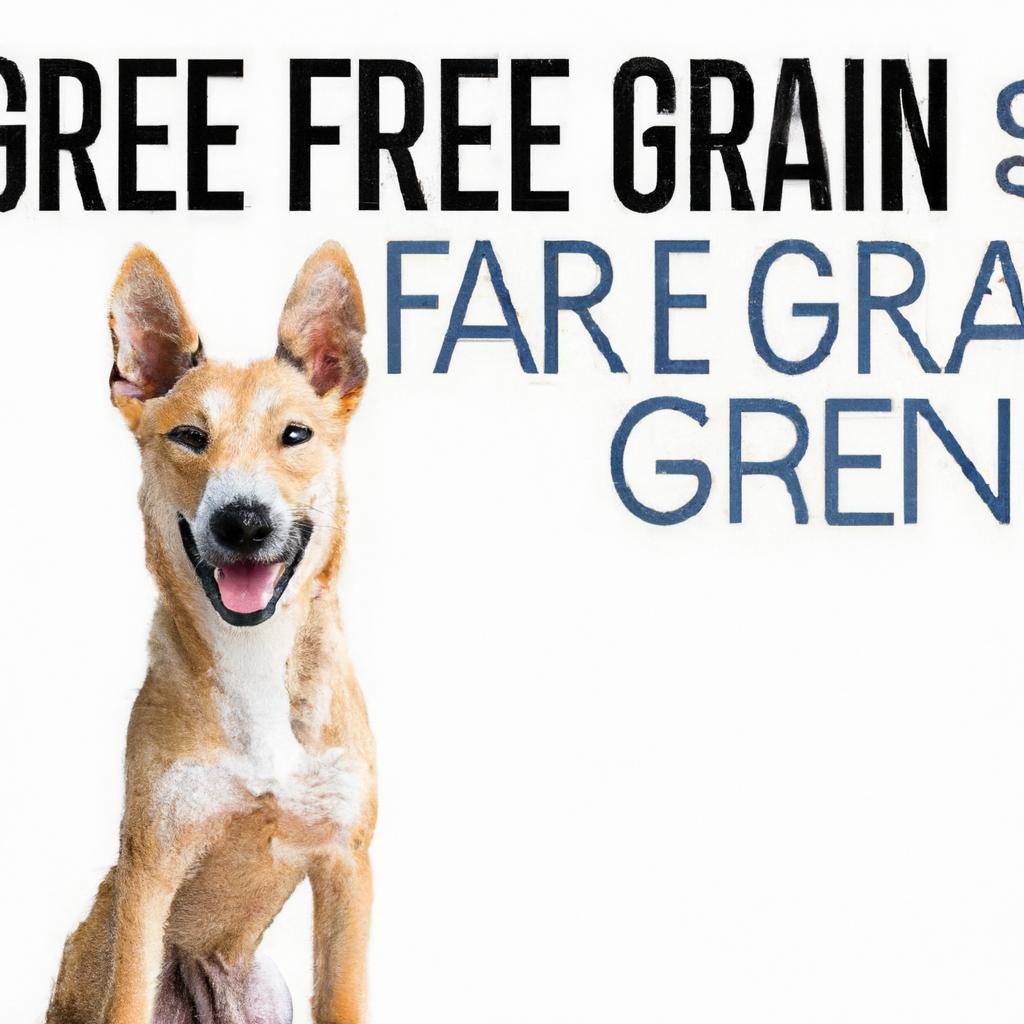When Max, a spirited golden retriever, started showing signs of fatigue and digestive issues on his grain-free diet, his owner, Sarah, was worried. After consulting her vet, she learned that many dogs thrive on regular dog food, rich in essential nutrients and fiber. Hesitant but hopeful, Sarah made the switch. Within weeks, Max’s energy returned, and his coat gleamed with health. If your dog is struggling, consider transitioning to a balanced diet. Sometimes, the right food can make all the difference in their happiness and vitality.
Contents
- Understanding the Nutritional Needs of Your Dog When Transitioning from Grain-Free to Regular Food
- Identifying Signs That Your Dog May Benefit from a Change in Diet
- Step-by-Step Guide to Safely Transitioning Your Dog to Regular Dog Food
- Expert Recommendations for Choosing the Right Regular Dog Food for Your Pet
- Q&A
Understanding the Nutritional Needs of Your Dog When Transitioning from Grain-Free to Regular Food
Transitioning your dog from grain-free to regular food requires a thoughtful approach to ensure their nutritional needs are met. Dogs, like humans, have unique dietary requirements that can change based on the type of food they consume. Regular dog food often contains grains, which can provide essential nutrients and energy sources that may have been lacking in a grain-free diet. Understanding these nutritional components is crucial for a smooth transition.
When considering this switch, it’s important to focus on the **key nutrients** that regular dog food offers. These include:
- Carbohydrates: Grains are a significant source of carbohydrates, which are vital for energy.
- Fiber: Grains can enhance digestive health and promote regular bowel movements.
- Vitamins and Minerals: Many grain-based foods are fortified with essential vitamins and minerals that support overall health.
As you make the transition, monitor your dog’s response to the new food. Look for signs of digestive upset, such as changes in stool consistency or appetite. It’s advisable to introduce the new food gradually, mixing it with the grain-free option over a period of 7 to 10 days. This gradual approach helps your dog’s digestive system adapt and minimizes the risk of gastrointestinal issues.
Lastly, consult with your veterinarian to ensure that the new diet aligns with your dog’s specific health needs. They can provide tailored advice based on your dog’s age, breed, weight, and any pre-existing health conditions. By prioritizing your dog’s nutritional needs during this transition, you can help them thrive on their new diet while enjoying the benefits of a balanced and varied food source.
Identifying Signs That Your Dog May Benefit from a Change in Diet
As a responsible dog owner, it’s essential to pay close attention to your furry friend’s health and well-being. One of the most significant indicators that your dog might need a dietary change is a noticeable shift in their energy levels. If your once-active pup seems lethargic or disinterested in playtime, it could be a sign that their current food isn’t providing the necessary nutrients. A diet that aligns with their specific needs can help restore their vitality and enthusiasm for life.
Another critical factor to consider is your dog’s coat condition. A shiny, healthy coat is often a reflection of a well-balanced diet. If you notice excessive shedding, dullness, or even skin irritations, it may indicate that your dog is not receiving the right balance of fatty acids and proteins. Switching to a more suitable diet could enhance their coat’s appearance and overall skin health, making them look and feel their best.
Digestive issues are also a common sign that your dog may benefit from a dietary adjustment. If you observe frequent gas, bloating, or irregular bowel movements, it’s crucial to evaluate their current food. A diet that is easier to digest and tailored to their specific needs can alleviate these discomforts and promote a healthier digestive system. Ensuring that your dog’s food is compatible with their digestive health can lead to a happier, more comfortable pet.
Lastly, keep an eye on your dog’s weight. Sudden weight gain or loss can be alarming and may indicate that their current diet is not meeting their nutritional requirements. A balanced diet is vital for maintaining a healthy weight, which in turn supports overall health. If you find that your dog is struggling to maintain their ideal weight, consulting with a veterinarian about transitioning to a different type of food could be a beneficial step towards achieving their health goals.
Step-by-Step Guide to Safely Transitioning Your Dog to Regular Dog Food
Transitioning your dog from grain-free to regular dog food requires a thoughtful approach to ensure their health and comfort. Start by selecting a high-quality regular dog food that meets your dog’s nutritional needs. Look for options that list real meat as the first ingredient and avoid artificial additives. **Consult your veterinarian** to determine the best food for your dog’s specific dietary requirements, especially if they have any pre-existing health conditions.
Once you’ve chosen the right food, begin the transition gradually. A sudden change in diet can upset your dog’s stomach, leading to gastrointestinal issues. **Follow a gradual mixing method**: for the first few days, mix 75% of the grain-free food with 25% of the new regular food. Monitor your dog’s reaction closely during this period. If they seem to handle the mix well, you can slowly increase the proportion of regular food over the next week or so.
During the transition, it’s essential to keep an eye on your dog’s stool consistency and overall behavior. **Signs of distress** such as diarrhea, vomiting, or lethargy may indicate that the new food isn’t agreeing with them. If you notice any adverse reactions, slow down the transition process and give your dog more time to adjust to the new diet. You may also want to consider trying a different brand or formula if issues persist.
ensure that your dog stays hydrated throughout the transition. Fresh water should always be available, as changes in diet can sometimes lead to increased thirst. **Maintain a consistent feeding schedule** to help your dog adapt to the new food. By taking these careful steps, you can help your furry friend enjoy a smooth transition to regular dog food, promoting their overall health and well-being.
Expert Recommendations for Choosing the Right Regular Dog Food for Your Pet
When considering a switch from grain-free to regular dog food, it’s essential to prioritize your pet’s nutritional needs. Look for options that list high-quality protein sources as the first ingredient, such as **chicken, beef, or fish**. These proteins are crucial for maintaining muscle mass and overall health. Additionally, ensure that the food contains a balance of carbohydrates, fats, and essential vitamins and minerals to support your dog’s energy levels and immune system.
Another important factor is the inclusion of **whole grains**. Ingredients like brown rice, oats, and barley can provide beneficial fiber that aids in digestion. When selecting a regular dog food, check for the presence of **probiotics** and **prebiotics**, which can further enhance gut health. These components help in the absorption of nutrients and can prevent gastrointestinal issues that sometimes arise during dietary transitions.
It’s also wise to consider your dog’s specific life stage and health requirements. Puppies, adults, and senior dogs have different nutritional needs. Look for formulas that are tailored to your pet’s age, size, and activity level. For instance, active breeds may benefit from higher protein and fat content, while older dogs might require lower calories to maintain a healthy weight. Always consult with your veterinarian to determine the most suitable food for your dog’s unique circumstances.
Lastly, don’t forget to monitor your dog’s response to the new food. Transition gradually over a week or so to minimize digestive upset. Observe for any signs of allergies or sensitivities, such as itching, gastrointestinal upset, or changes in behavior. If you notice any adverse reactions, it may be necessary to explore alternative options or consult with a veterinary nutritionist for tailored advice. Choosing the right regular dog food can significantly enhance your pet’s quality of life, making it a decision worth careful consideration.
Q&A
-
Is it safe to switch from grain-free to regular dog food?
Yes, it is generally safe to switch from grain-free to regular dog food. However, it’s essential to do so gradually to avoid gastrointestinal upset. A slow transition allows your dog’s digestive system to adjust to the new ingredients.
-
How should I transition my dog to regular food?
To transition your dog, mix a small amount of the new regular dog food with the grain-free food. Gradually increase the proportion of the new food over 7 to 10 days. This method helps minimize digestive issues and ensures your dog adapts well.
-
Will my dog experience any side effects during the switch?
Some dogs may experience mild side effects such as gas or loose stools during the transition. If these symptoms persist or worsen, consult your veterinarian. They can provide guidance tailored to your dog’s specific needs.
-
What are the benefits of switching to regular dog food?
Switching to regular dog food can offer several benefits, including:
- Improved Digestive Health: Regular dog food often contains fiber-rich grains that support healthy digestion.
- Balanced Nutrition: Many regular dog foods are formulated to provide a complete and balanced diet, ensuring your dog receives essential nutrients.
- Variety of Options: Regular dog food comes in various flavors and formulations, allowing you to find the best fit for your dog’s taste and dietary needs.
transitioning from grain-free to regular dog food can be beneficial for your pet’s health and well-being. Consult your veterinarian to ensure a smooth switch, and watch your furry friend thrive on a balanced diet tailored to their needs.

大家好,我是彼得潘,專業的手法身體治療師。我喜歡探索和研究各種主題,並透過與人工智慧的合作分享專業、實用、有趣的文章。我們定期進行人工審核,以確保內容的準確性。如果您發現文章中有任何不準確的地方,請隨時與我們聯繫,我們會及時糾正。您可以透過 [email protected] 與我們聯繫。



